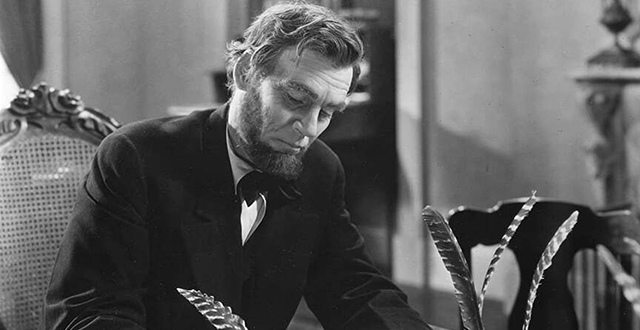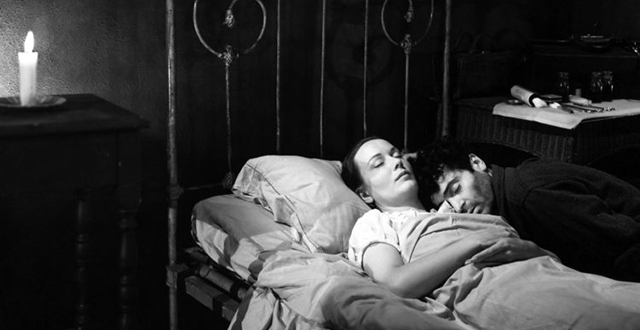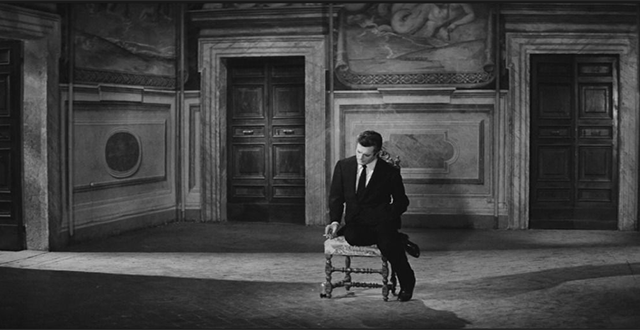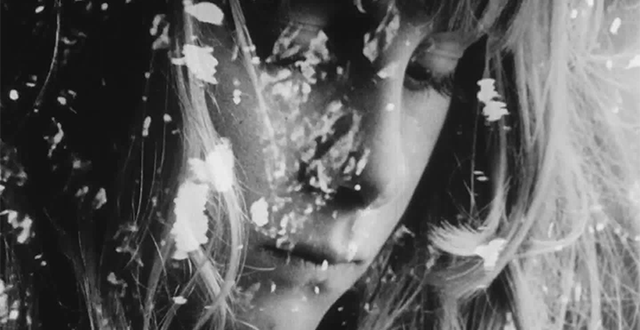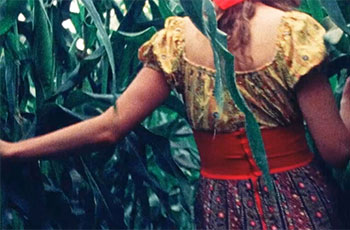News
Out of the Vaults: “Abraham Lincoln”, 1930
Meher Tatna
By the 1920’s, director D.W. Griffith’s star was fading. His controversial but successful The Birth of a Nation was behind him and his later movies barely broke even at the box office, his cost overruns a regular feature of his filmmaking. But he pressed ahead to make his first talkie for United Artists, Abraham Lincoln in 1930, with a production budget of $1 million. It would be his penultimate movie, the film sold as “the biggest undertaking yet launched in talking pictures.” Griffith would say to the Pittsburgh Press of August 31, 1930 that “Abraham Lincoln, to my mind, is the finest thing I have ever done.” His title card on the film reads – ‘Personally directed by D.W. Griffith.’
Lincoln had been a character in The Birth of a Nation, and Griffith decided to devote a whole movie to him inspired by a 1926 biography by poet Carl Sandburg. The script was written by Stephen Vincent Benet, the Pulitzer Prize-winner in 1929 for his poem “John Brown’s Body.”
Griffith’s father had been a Confederate Army colonel in the Civil War, and Griffith was firmly on the Confederate side, sympathetic to the Ku Klux Klan as demonstrated in Birth. In a filmed interview with Walter Huston (who plays the title role in Abraham Lincoln) shown as a prologue to the reissue of Birth in 1930, Griffith talks about his Southern sympathies. “I suppose it began when I was a child. I used to get under the table and listen to my father and his friends talk about the battles they’d been through and their struggles. Those things impress you deeply. And I suppose that got into Birth. Huston then asks him, “Do you feel as though it were true?” His answer is “Yes, I feel so ... That’s natural enough, you know. When you’ve heard your father tell about fighting, day after day, night after night. And have nothing to eat but parched corn. And about your mother staying up night after night, sewing robes for the Klan. The Klan at that time was needed. It served a purpose.”
But in Abraham Lincoln, Griffith switches sides and portrays Lincoln as a hero. The film spans his entire life from birth to death, and the script takes pains to show Lincoln as a human being: a man in love, his depression at the death of his girlfriend, his humor and sense of camaraderie with his fellows, a devoted father and patient husband, and a steadfast commander-in-chief, determined to hold the Union together no matter the current cost if it meant a united country for future generations.
The film is episodic and shows vignettes from Lincoln’s life interspersed with a few battle scenes. It opens with a prologue on a slave ship (missing in some versions) in which the deplorable conditions of slaves below decks are shown, and one dead slave is tossed overboard. Then it goes on to Lincoln’s birth in the famous log cabin, shows him working at his rail-splitting job that supports his law studies, his love affair with Ann Rutledge who dies before they can marry and his subsequent depression, and his courtship of Mary Todd. Then we see him lamenting his failure to accomplish anything at age 50 to the partner of his law practice; his subsequent run for president; going head to head with Stephen A. Douglas, the Democratic nominee, and winning the presidency; the appointment of Ulysses S. Grant to lead the Civil War and the dispatches he receives about its progress in the White House; the signing of the Emancipation Proclamation; his reelection that is mentioned in one scene; then his assassination by John Wilkes Booth in a scene recreated at the Ford’s Theater, similar to the one he filmed for Birth.
Huston, as mentioned before, plays Lincoln, with lifts in his shoes to replicate Lincoln’s height. The nuances of being on camera with audio for the first time were lost on the director and his stars – the declamatory acting style of the theater is maintained throughout the movie, stagy and awkward with long pauses between dialogue. One line – “the Union must be preserved” – is pronounced weightily at least ten times. In one scene, he wanders around the White House in bathrobe and socks, worrying about the war, still declaiming to Mary when she asks him to go to bed.
The script does no one any favors with lines like “Yes, Abe, you’ve got your gingerbread,” which is Ann’s response to Lincoln’s proposal. Una Merkel, a respected stage actress doing her first talkie (and who would go on to a very good career), is Ann Rutledge, and comes across as simpering and coy, her intimate scenes with Huston cringeworthy. The unfortunate Mary Todd (Kay Hammond) is written as a self-absorbed shrew, and the villain Booth played by Ian Keith stops short of twirling imaginary mustachios but goes full steam ahead orating his lines with bulging eyes and clenched fists, all in heavy makeup which includes eyeliner. Huston himself has noticeable lipstick in some early scenes.
There are historical inaccuracies. The Lincoln-Douglas debates omit the subject of slavery altogether and focus on secession. In reality, the Union soldiers did not fire on Charleston, SC from Fort Sumter to start the Civil War, but the incident is portrayed as such though the reverse is true. The Secret Service delivers reports to Lincoln in the film, but it wasn’t established until after Lincoln’s death. And Lincoln delivers portions of his Gettysburg address at Ford’s theater just before he is killed – the entire Gettysburg speech completely missing from the film. And aside from the brief scene where he is showed signing the Emancipation Proclamation, the subject of ending slavery, Lincoln’s abiding obsession and his proudest accomplishment, is given short shrift. Griffith’s whole emphasis (and therefore his Lincoln’s) is on the subject of secession.
There is one shocking scene that shows Griffith’s lip service to the subject of slavery. While in the prologue there seem to be actual Black men portraying slaves, in a later scene a ‘good Negro’ is played by a white man in blackface telling white Southerners that he wanted no part of John Brown’s raid on Harper’s Ferry and that he threw away the gun he was given.
But technically, there is much to admire in this movie given the context. The roving camera in the war scenes is especially effective, particularly in the post-Bull Run montage and the Battle Cry of Freedom sequence. Griffith pioneered the fade-out, the close-up, and the use of miniatures, though his use of one of the Lincoln Memorial in the last scenes of the movie is not quite successful.
In his biography, Griffith wrote about the eight-week shoot: “a nightmare of mind and nerves.” He resumed his drinking habit, and the picture was edited without his input. When he asked the studio for changes to the cut, he was refused.
The film is now in the public domain as the original copyright was never renewed and many versions of it are online, some missing the prologue. There is a card that precedes the restored version that says: “This restored edition of Abraham Lincoln incorporates all known existing footage of D.W. Griffith’s film. Portions of the soundtrack of the first three reels have not survived. During these sequences, dialogue and music cues are provided by subtitles.” The original film was in sepia-tone and ran 97 minutes. Several versions are now seen in black and white with the prologue missing entirely, for example, the one on Amazon Prime, but the one on YouTube has it.
The restoration of the film was done by The Museum of Modern Art with support from The Film Foundation, the Lillian Gish Trust for Film Preservation, and the Hollywood Foreign Press Association.
NOTES ON FILM & RESTORATION
When I was the director of the New York Film Festival, I got used to hearing the same question posed annually. One year, it was phrased like this: “You’ve been accused of running an ‘auteurist’ festival. How do you feel about that?” My answer was always the same: “If you mean do we show films made by human beings who create individual artistic responses to the world around them, then I plead guilty as charged.” The question was never meant maliciously, but in that spirit of obligatory equanimity that is a fixture of modern journalism. But lingering behind the question is the familiar spirit, always with us in ever-mutating forms, of condescension to art.
This condescension is even present in the stated attitudes of cultural institutions that resort to high-flown rhetoric as justification for their existence—art can “enlighten” us and “touch the soul” and “enrich our lives,” all of which is so vaguely obvious as to be beside the point, and incidental to what art is and does.
Art will always be fragile, no matter what the political or cultural climate. It will always be called upon to financially justify itself, to demonstrate its “relevance,” to prove its adherence to this or that social doctrine or movement no matter how worthy, and it will always be open to charges of “elitism” from those opportunistic enough to make them.
At a moment like this one—today, January 13, 2021, in the United States of America—art will be seen as beside the point. In terms of the immediate and pressing reality, that’s obviously the case. But art lingers as a powerful, looming presence in the background of all moments of upheaval, and, I would wager, in the lives of many people who are now engaged in debate on the floor of the House of Representatives.
“St. Thomas Aquinas says that art does not require rectitude of the appetite, that it is wholly concerned with the good of that which is made,” wrote Flannery O’Connor. “He says that a work of art is a good in itself, and this is a truth that the modern world has largely forgotten. We are not content to stay within our limitations and make something that is simply a good in and by itself. Now we want to make something that will have some utilitarian value.” But the utilitarian value of an individual novel or painting or film is always incidental and has a short expiration period. When it’s at its most powerful, it doesn’t confirm or rebut or prove or disprove or condemn or celebrate anything. It takes on a life of its own and poses a cosmic, unanswerable question. It sees, it reveals itself before us, and it makes us shiver.
Over the years, Martin Scorsese and Margaret Bodde and Jennifer Ahn and the members of The Film Foundation’s board have been asked multiple variations on the question “Is film restoration necessary?” The question is always posed in the same spirit that I mentioned above. And it’s always best answered with another question: if you recognize the value of cinema, then how could film restoration not be necessary?
The cinema doesn’t put food on the table. It doesn’t provide for the common defense or keep the trains running on time or resolve territorial disputes. To paraphrase Daniel Berrigan, it is useless in the sense that God is useless, because neither are part of the kingdom of necessity.
The Film Foundation has participated in, facilitated and commissioned the restorations of so many films. Here are some images from a few of the most fragile.
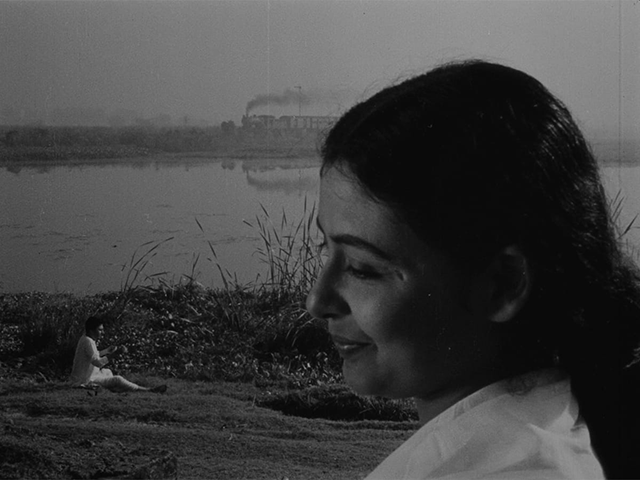
THE CLOUD-CAPPED STAR (India, 1960, d. Ritwik Ghatak)
Restored by the Criterion Collection in partnership with The Film Foundation’s World Cinema Project and the Cineteca di Bologna, from elements preserved by the National Film Archive of India.
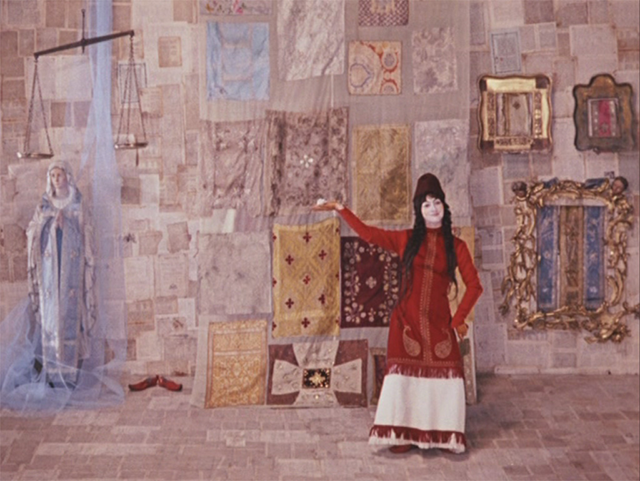
THE COLOR OF POMEGRANATES (Armenia, 1969, d. Sergei Parajanov)
Restored by Cineteca di Bologna/L’Immagine Ritrovata laboratory and The Film Foundation’s World Cinema Project, in association with the National Cinema Centre of Armenia and Gosfilmofond of Russia. Restoration funded by the Material World Charitable Foundation.
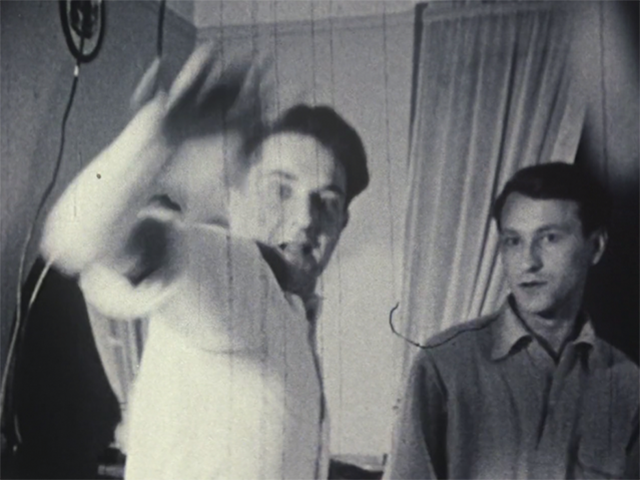
LOST LOST LOST (1976, d. Jonas Mekas)
Preserved by Anthology Film Archives through the Avant-Garde Masters program funded by The Film Foundation and administered by the National Film Preservation Foundation.
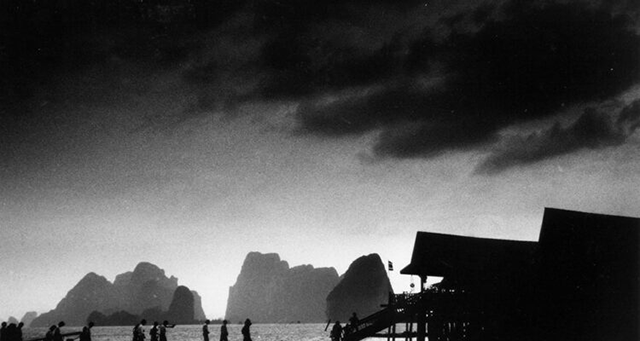
MYSTERIOUS OBJECT AT NOON (Thailand, 2000, d. Apichatpong Weerasethakul)
Restored in 2013 by the Austrian Film Museum and Cineteca di Bologna/L’Immagine Ritrovata laboratory, in association with The Film Foundation’s World Cinema Project, LISTO laboratory in Vienna, Technicolor Ltd in Bangkok, and Apichatpong Weerasethakul. Restoration funded by Doha Film Institute.

TOUKI BOUKI (Senegal, 1973, d. Djibril Diop Mambéty)
Restored in 2008 by Cineteca di Bologna/L’Immagine Ritrovata laboratory, in association with The Film Foundation’s World Cinema Project and the family of Djibril Diop Mambéty. Restoration funded by Armani, Cartier, Qatar Airways and Qatar Museum Authority.
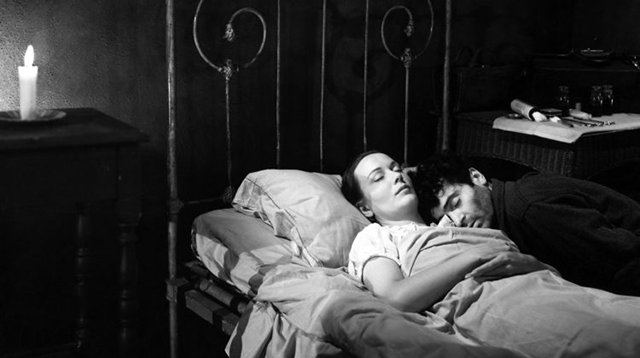
VOICE IN THE WIND (1944, d. Arthur Ripley)
Restored by UCLA Film & Television Archive and The Film Foundation, in collaboration with Cohen Film Collection. Restoration funding provided by the Hobson/Lucas Family Foundation.
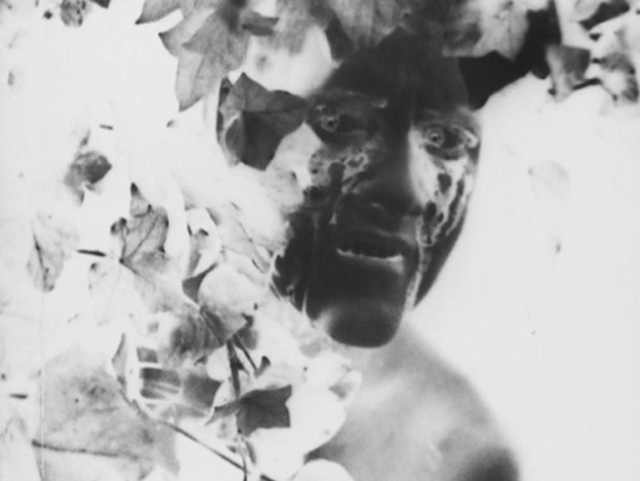
THE WAY TO SHADOW GARDEN (1954, d. Stan Brakhage)
Restored by the Academy Film Archive and The Film Foundation, with funding provided by the Hobson/Lucas Family Foundation.
NOTES ON FILM & RESTORATION
In a 1965 television interview with the European correspondent Irving R. Levine, Federico Fellini spoke of attempting through his work to orient his viewers in the direction of “inner liberation.” In the commercialized debasement of his own moment of peak popularity, this endeavor (for lack of a better word) was obscured by the tendency to sell the outer trappings of the films, and to sell Fellini himself as a grand showman or ringmaster, an amalgamation of La Dolce Vita’s Marcello riding on a young woman’s back at the orgy that never quite gels, 8 ½’s Guido wielding a bullwhip to subdue his fantasized harem, and perhaps the kindly onscreen narrator in Amarcord. In the late 60s and early 70s, Fellini was conjoined with Stanley Kubrick (who he greatly admired) and filmmakers as various as Nicolas Roeg, Ken Russell, Alexander Jodorowsky and Kenneth Anger as masters of cinema as mass hypnosis, film-as-acid-trip. But the inner liberation that Fellini discusses in the Levine interview is precisely the opposite of mind-expanding drug use or unbridled sexual freedom. Fellini’s films radiate a spiritual impulse that is closer to the writings of Thomas Merton than the pronouncements of Timothy Leary or Wilhelm Reich. In more than one film, he actually managed to describe a series of all-too-human, self-destructive delusions in the most generous terms imaginable, and maintained a fairly miraculous balance between the bewitching spectacle and pageantry of human chaos and the sadness and desperation beneath the surface.
In the last few days, my wife and I have gone through many of the titles in Criterion’s magnificent new Essential Fellini box set. It’s been a revelatory experience for both of us. Last night we looked at La Dolce Vita, which was restored by the Cineteca di Bologna in collaboration with The Film Foundation and funding by Gucci. This was the Fellini film that took the world by storm (and that actually coined the term “paparazzi”). La Strada and 8 ½ may be the greater films, but La Dolce Vita is a powerfully moving experience, a pageant of delusions playing out in the heady landscape of Rome at the end of the 50s that today seems more sad and deeply soulful than spectacular.
As I write these last words, masses of Americans suffering from a very different type of delusion are storming the Capitol building. One day, years from now, when someone makes fiction out of this chilling moment, let’s hope that it’s a filmmaker with the artistry and the soul and the sensitivity of Federico Fellini.
- Kent Jones
Follow us on Instagram, and Twitter!
LA DOLCE VITA (1960, d. Federico Fellini)
Restored by Cineteca di Bologna at L’Immagine Ritrovata Laboratory in association with The Film Foundation, Centro Sperimentale di Cinematografia-Cineteca Nazionale, Pathé, Fondation Jérôme Seydoux-Pathé, Mediaset-Medusa, Paramount Pictures and Cinecittà Luce. Restoration funding provided by Gucci and The Film Foundation.
LA STRADA (1954, d. Federico Fellini)
Restored in 4K resolution by the Criterion Collection and The Film Foundation at Cineteca di Bologna’s L’Immagine Ritrovata laboratory from a 35mm dupe negative preserved by Beta Film GmbH. Restoration funding provided by the Hollywood Foreign Press Association.
12 Films to be Preserved through Avant-Garde Masters Grants
Two films from avant-garde film renaissance of the late ’90s, Peggy Ahwesh’s Nocturne (1998) and Jesse Lerner’s Ruins (1999), join ten shorts made by Bay Area women artists to be preserved through the 2020 Avant-Garde Masters Grants, awarded by The Film Foundation and the National Film Preservation Foundation.
UC Berkeley Art Museum and Pacific Film Archive will preserve ten films that were distributed by the Bay Area–based Serious Business Company (SBC), an independent film distribution company founded by Freude (1942–2009), operating from 1972 to 1984. Among them is Gunvor Nelson’s masterpiece My Name is Oona (1969). Named to the National Film Registry in 2019, this portrait of the artist’s daughter uses a repetitive soundtrack and rhythmic editing to capture the joyful chaos of childhood. Also distributed by SBC and slated for preservation are Alice Anne Parker’s I Change I Am the Same (1969), a playful critique of clothing and gender roles, four films exploring domesticity and the artistic life made by Freude, Josie Winship’s animated Bird Lady vs. the Galloping Gonads (1976), Karen Johnson’s Orange (1970), and Judith Wardwell’s satirical take on America’s sanitation obsession, Plastic Blag (1968).
Peggy Ahwesh’s Nocturne evokes gothic literature and horror film history, weaving stark black-and-white imagery with footage taken with a PixelVision video camera. The dreamlike narrative mixes text and spoken word to create a minimalist psychological horror film. Anthology Film Archives is supervising the preservation and will premiere the new print as part of a Peggy Ahwesh retrospective alongside other films preserved through NFPF programs.
XFR Collective will oversee the preservation of Jesse Lerner’s feature-length collage essay Ruins. Mostly comprised of archival footage, Ruins is a mischievous melding of fact and fiction that takes on the trappings of traditional museums. It explores the way history is constructed by official means and pokes holes in those narratives with wit and bite.
Now in its 18th year, Avant-Garde Masters was created by The Film Foundation and the NFPF to save films significant to the development of the avant-garde in America. Funding is generously provided by the Hobson/Lucas Family Foundation. The grants have preserved 200 works by 78 artists, including Kenneth Anger, Shirley Clarke, Bruce Conner, Joseph Cornell, Oskar Fischinger, Hollis Frampton, Barbara Hammer, Ernie Gehr, George and Mike Kuchar, and Carolee Schneemann. A full list of films preserved through the program can be found here.
